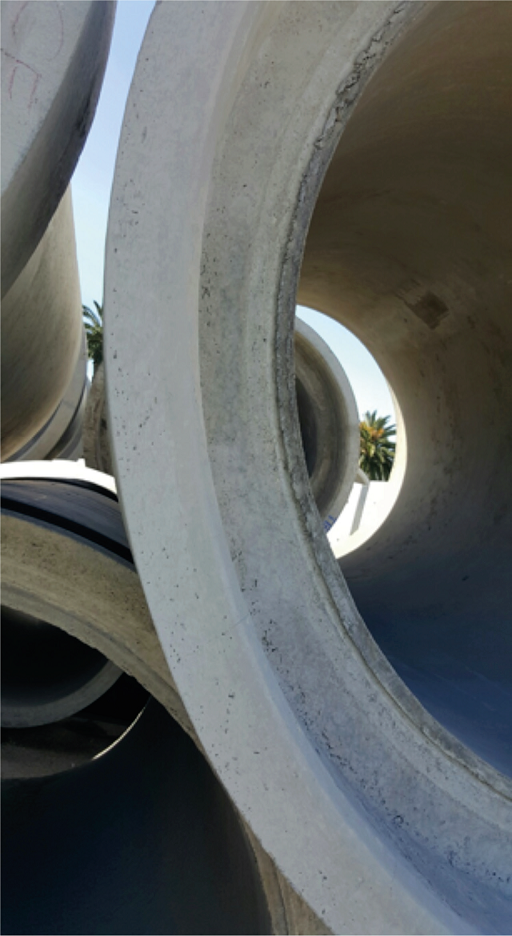
Just like HDPE Pipes, Sacrificial Layer Pipes are used for sewer reticulation. The exposed concrete in the joints of the pipeline needs to be protected against the corrosive gasses. The inside of the joint consists of Portland cement and Siliceous aggregates which will not give the same resistance to sewer corrosion as the sacrificial layer in the barrel of the pipe.
When selecting sewer pipes it is recommended that the Sacrificial Layer required both be added to the structural wall required and that the pipe be specified in terms of strength and sacrificial layer
required. This approach ensures that a pipe will be structurally sound at the end of its design life and can, if needed, be rehabilitated to extend its life.
In order to accommodate different levels of estimated corrosion, Rocla manufactures five different types of spigot & socket pipes for use in sewer applications.
In order of increasing resistance to acidic attack these five products are:
1. Standard pipes with no sacrificial lining, using non-dolomitic aggregates and Ordinary Portland Cement.
2. Standard pipes with no sacrificial lining, using Dolomitic aggregates and Ordinary Portland Cement.
3. Pipes with a sacrificial lining that uses Dolomitic aggregates and Ordinary Portland Cement.
4. Pipes with a sacrificial lining that uses Dolomitic aggregates and Calcium Alluminate Cement.
5. Pipes with an HDPE lining.
Handling and Installation:
When handling any concrete products, it is important to remember that, as concrete is a heavy and somewhat brittle material, bumps or shock loads of any description are liable to damage the product. This applies particularly to sharp edges.
When offloading the products on site, the equipment must not damage the products. Sewer pipes do not have a lifting hole, as the system must be watertight. A 150mm sling passing around the center of gravity of the pipe must be used to handle the product. When placing the product on the ground, it is important to note that the pipe must not rest on the socket portion. The full weight of the pipe must be borne by the barrel of the pipe.
During the installation, the trench or excavation must be prepared to the Site Engineers specification. Once the bedding is in place it is ready for the pipes. The specific area where the socket end would rest must be removed, so that the pipe can be horizontal during installation, and that the pipe can rest on the barrel once in place.
Each pipe must be sealed with a rubber ring. This must be place on the spigot end and located in the correct position as indicated by the locating groove. The rubber ring must be of equal tension around the barrel. This can be attained by inserting a screwdriver, or similar object, between the ring and the pipe, and running the screwdriver around the barrel twice.
The pipes are lowered into place using the same handling technique as before. Once the pipes are lined up, it will be necessary to pull the spigot end into position to fit into the socket end of the already laid pipe whilst the pipe is still suspended. This can either be done by levering the pipe forward, or by means of a tirfor system, which pulls the pipes together.
Once this is completed, and the pipe is correctly sealed, the pipe can be released to lie on the bedding. It must be noted that again, the full weight of the pipe must rest on the barrel only and not on the socket area. The next pipe can then be lowered into position.
Backfilling of the pipe to the engineer’s specification is of utmost importance, as the pipe strength is designed to suit the installed condition. Care must be taken to compact underneath the pipe curvature to ensure a good foundation is in place. For more information on pipe installation, please use the contact us facility, as our staff can be of assistance on site with the installation activities.

